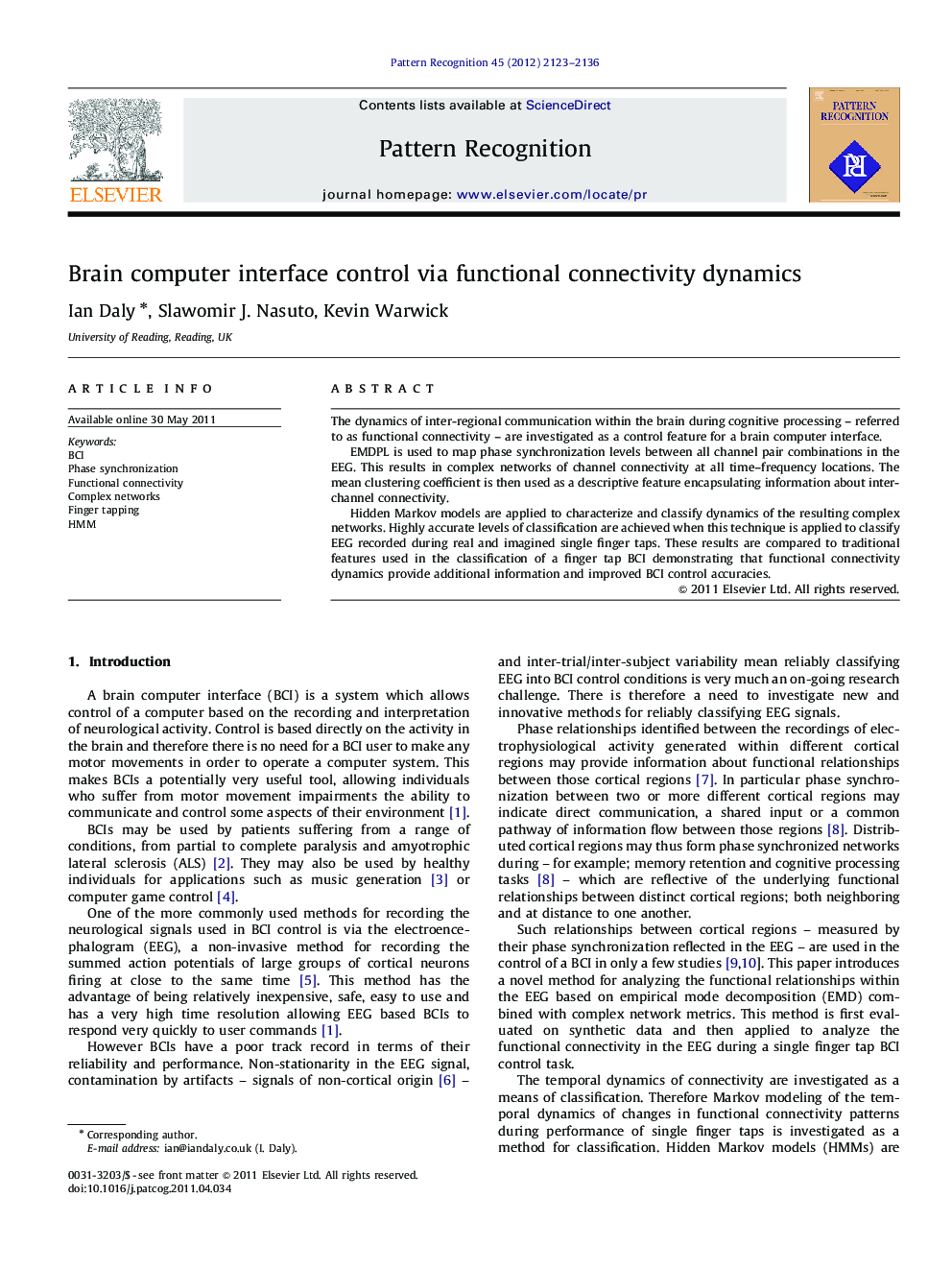| Article ID | Journal | Published Year | Pages | File Type |
|---|---|---|---|---|
| 530295 | Pattern Recognition | 2012 | 14 Pages |
The dynamics of inter-regional communication within the brain during cognitive processing – referred to as functional connectivity – are investigated as a control feature for a brain computer interface.EMDPL is used to map phase synchronization levels between all channel pair combinations in the EEG. This results in complex networks of channel connectivity at all time–frequency locations. The mean clustering coefficient is then used as a descriptive feature encapsulating information about inter-channel connectivity.Hidden Markov models are applied to characterize and classify dynamics of the resulting complex networks. Highly accurate levels of classification are achieved when this technique is applied to classify EEG recorded during real and imagined single finger taps. These results are compared to traditional features used in the classification of a finger tap BCI demonstrating that functional connectivity dynamics provide additional information and improved BCI control accuracies.
► We develop a method to map long range synchronization patterns in the cortex. ► Functional connectivity is measured via the use of complex network metrics applied to characterize these connectivity maps. ► The temporal dynamics of these connectivity measures are measured via Markov modeling and the method is evaluated on synthetic EEG. ► The method is then applied to achieve very high levels of classification for identifying executed and imagined finger taps. ► These results are compared to ERD/S features traditionally used to allow BCI control via motor imagery. The connectivity method is shown to achieve far higher accuracies across all 15 investigated subjects suggesting that connectivity dynamics are suitable for highly accurate BCI control.
